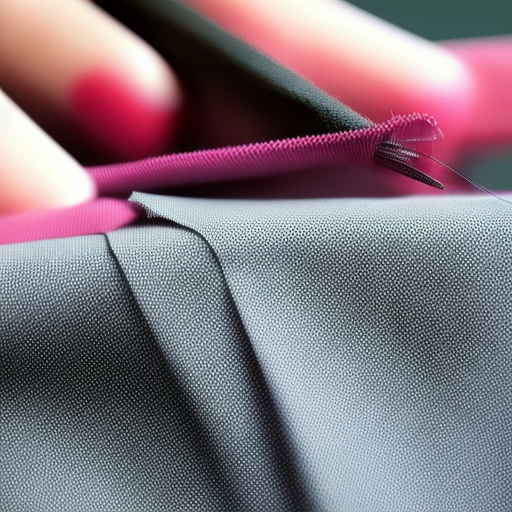Working with stretchy fabrics can be challenging, but with the right techniques, you’ll be able to sew beautiful and comfortable garments. Here are some essential tips to help you master sewing with stretchy fabrics:
1. Choose the Right Needle
Select a ballpoint or stretch needle for your sewing machine. These needles are specifically designed to prevent snagging or damaging the fabric while sewing. Their rounded tips help them glide through the fabric without creating large holes.
2. Use Appropriate Stitching Techniques
When sewing stretchy fabric, use a stretch stitch or a narrow zigzag stitch. These stitches allow the fabric to stretch without breaking the seams. It’s also advisable to slightly stretch the fabric while sewing to match the built-in stretch of the fabric.
3. Invest in Quality Thread
Ensure you’re using a good quality polyester thread for stretchy fabrics. Polyester thread has a slight give, which is perfect for accommodating the stretch and movement of the fabric. It also tends to be more durable and less prone to snapping than other types of thread.
4. Use the Right Tension
Adjust the tension settings on your sewing machine to accommodate the stretchy fabric. Test on a scrap piece first to ensure the stitches appear balanced and don’t pucker or stretch the fabric excessively.
5. Implement Stabilizers
For particularly delicate or lightweight stretchy fabrics, using stabilizers can be beneficial. Fusible knit interfacing or lightweight clear elastic can be applied to areas such as hemlines or collar edges to provide extra stability and prevent stretching or distortion.
6. Consider Using a Walking Foot
Using a walking foot attachment on your sewing machine can help feed the fabric evenly, preventing stretching or puckering. It allows the upper and lower fabric layers to move together, ensuring a smooth and consistent stitch.
7. Practice Proper Cutting Techniques
Ensure you’re using sharp scissors or a rotary cutter to cut through stretchy fabrics. Avoid pulling or tugging the fabric while cutting as it can lead to uneven edges. Take your time and cut slowly to achieve clean and precise cuts.
8. Finishing Techniques
When finishing your seams, consider using techniques like serging, overcasting, or using a zigzag stitch to prevent fraying. These methods provide stability to the fabric edges and ensure longevity.
Final Thoughts
Sewing with stretchy fabrics may require some adjustments to your usual techniques. Take your time, practice, and experiment to find the methods that work best for you. With patience and the right tools, you’ll be able to create professional-looking garments with stretchy fabric.





Wonderful article!
Nikki Smith: Thanks for the great advice!
Great article to learn helpful sewing techniques for those tricky stretchy fabrics! Such useful insight!